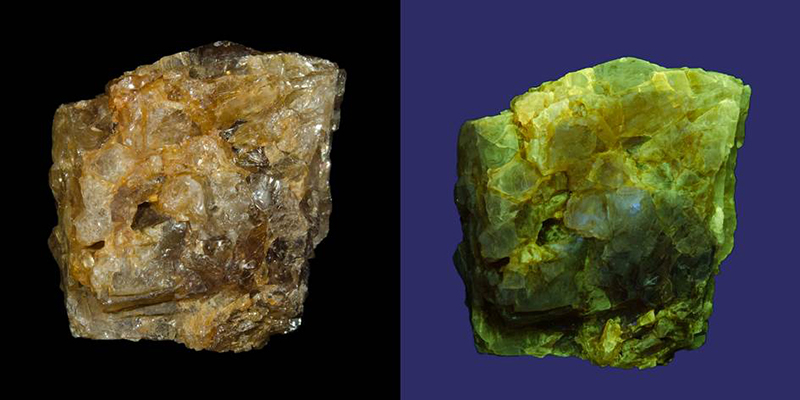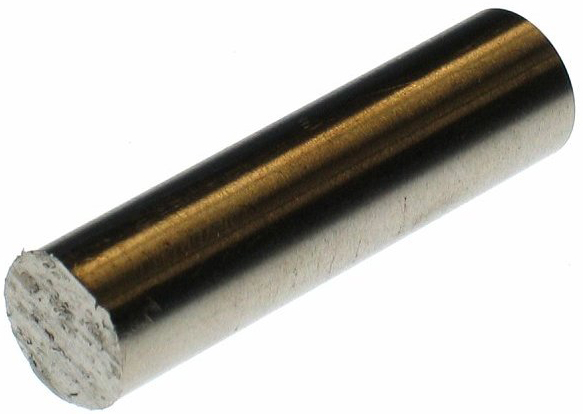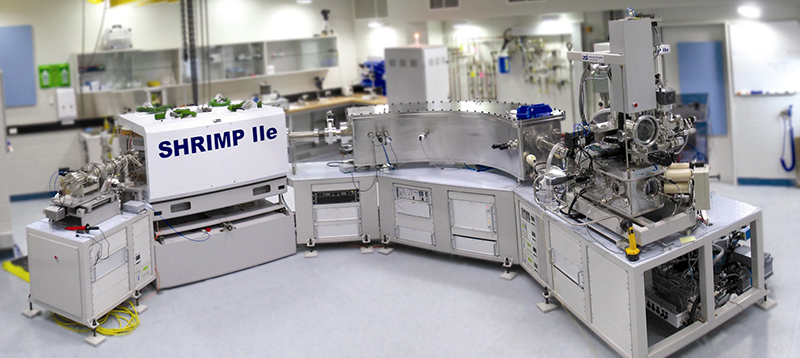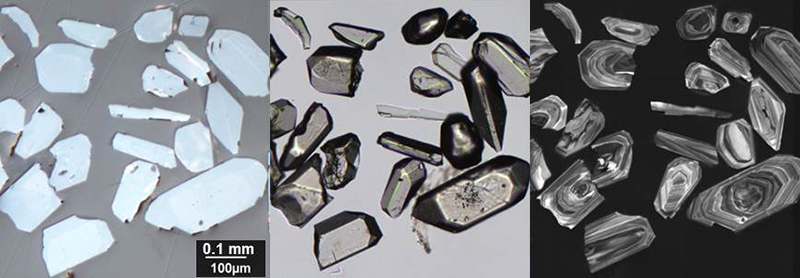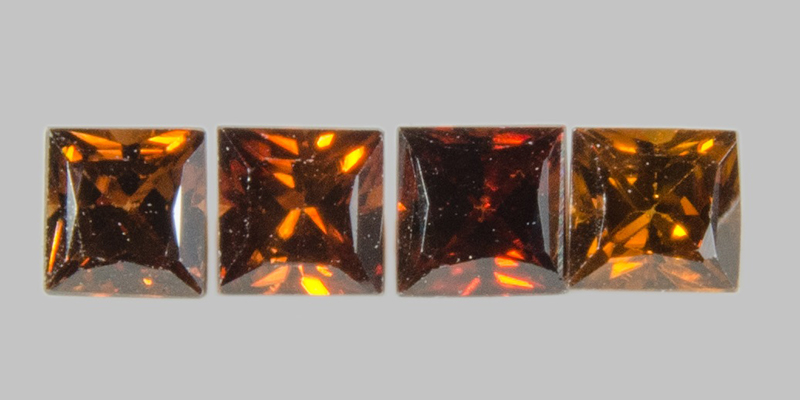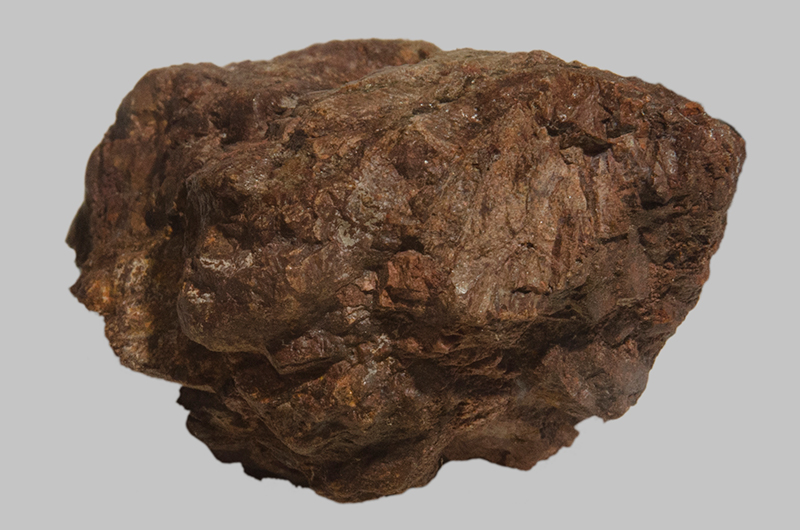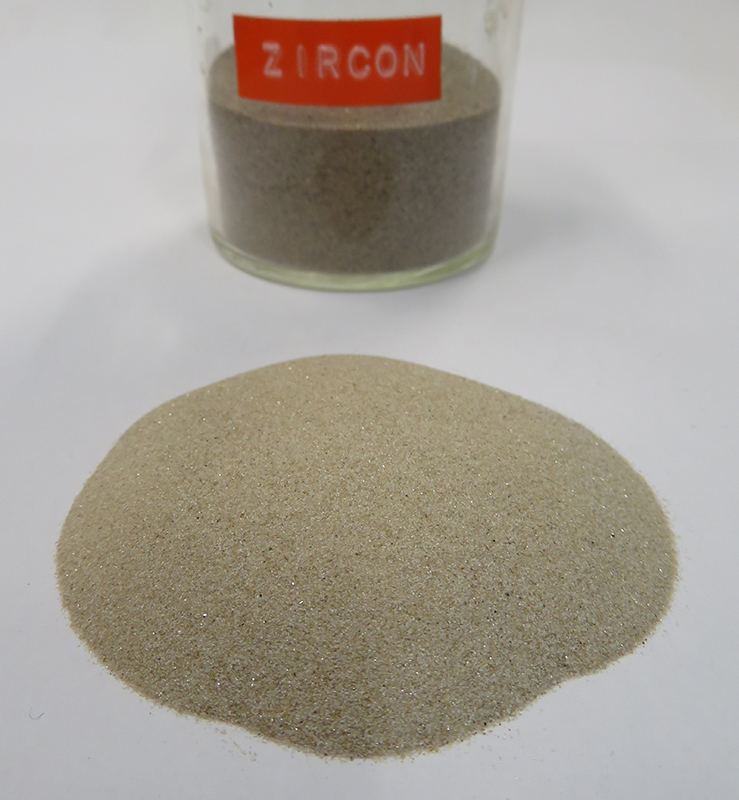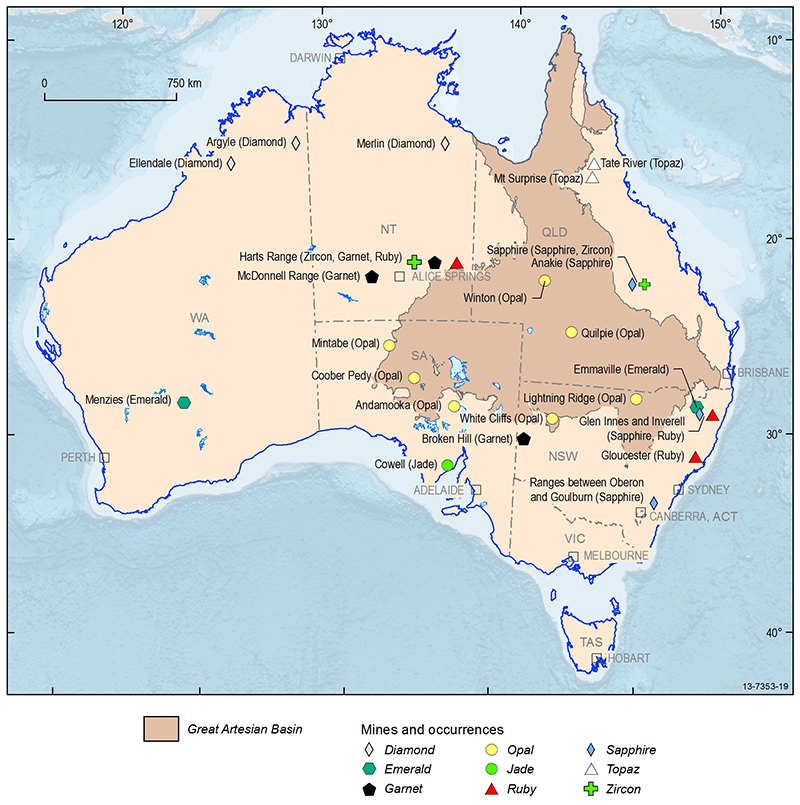Zircon
Last updated:1 September 2023
Introduction
Zircon is a zirconium silicate mineral found in small quantities in many rocks. It can be a variety of colours and some crystals are of gemstone quality. Zircon is sometimes confused with the metal zirconium, the zirconium oxide called zirconia, and cubic zirconia, a synthetic gemstone with an appearance
that is very similar to diamond.
Properties
Zircon is usually reddish brown, but can be white, orange, yellow, yellowish brown, purplish red, light red, blue, green and sometimes colourless. It is usually translucent but can be transparent. In fluorescent light zircons appear yellow (see Google Arts and Culture: Fluorescent Minerals: Rocks that get excited under ultraviolet light). Their average size in granite is 0.1 to 0.3 mm, but they can grow larger in pegmatites and carbonatites. A crystal
has been described from Canada that was 30 cm long and weighing 7 kg.
The Properties of Zircon
| Chemical symbol | ZrSiO4 |
|---|---|
| Relative density | 4.6-4.7 g/cm3 |
| Hardness | 7.5 on Mohs scale |
| Name | Named after the Arabic word 'Zargun', (derived from the Persian words: zar meaning gold and gun meaning colour). |
Uses
Zircon's hardness makes it useful as an abrasive and it has a high melting point (over 2500°C), so it is used in the steel industry, to line furnaces. Zircon contains the metals zirconium and hafnium. Zirconium is extremely hard and resistant to corrosion so is used to make pipes for harsh chemicals, nuclear reactor cladding, heat exchangers and speciality alloys. Zirconium is found in computer disc drives, in lightweight clothing and in many domestic products such as ballpoint pens and wear-resistant knives. Hafnium is used in nuclear control rods and super alloys. Zircon products are also used in engines, electronics, spacecraft and the ceramics industry.
Zircons can survive processes like erosion, transport and metamorphism, so they preserve a record of past geological processes. They are one of the key minerals used by geologists to determine the age of rocks. Zircons contain trace amounts of uranium and thorium, which decay radioactively over time. Because the rate of radioactive decay is known, scientists can measure the tiny amounts of these elements in a zircon to work out how old a host rock is. Zircons extracted from rocks from Jack Hills in Western Australia are up to 4.4 billion years old.
Further information on how zircons are used to work out the age of rocks.
Zircon is a popular gemstone because it is available in a variety of colours and colourless, faceted zircons have been used as a substitute for diamonds. Hyacinth is the name of gem-quality zircon that is yellow-red to red brown and starlite the name given to blue, heat-treated zircon. Zircon is sometimes confused with cubic zirconia, the synthetic crystalline form of zirconium dioxide (ZrO4), that can be cut and used as a gemstone.
History
Zircon is a popular gemstone that has been used for nearly 2000 years. Gem-grade zircon has been produced from river deposits in Sri Lanka, Cambodia, Myanmar, and Vietnam for hundreds of years. Zircons are mentioned in the Bible and a Hindu legend describes green zircon leaves given to a god as a gift.
In 1789, while analysing the composition of zircon Martin Heinrich Klaproth, a German chemist discovered zirconium. This metal was then isolated from zircon by Jöns Jacob Berzelius, a Swedish chemist, in 1824.
Blue zircon is found in many pieces of English estate jewellery produced in the 1880s, because it was fashionable at the time. However, during the early 1900s zircon was sometimes used fraudulently as a substitute for diamond so often the gem is thought of as an 'imitation' gemstone.
Mineral sands that included zircons were first mined in Australia at Byron Bay, New South Wales in 1934. The sand mining industry then expanded along the coast as far north as Fraser Island in Queensland. Further deposits of mineral sands were discovered in Western Australia in the 1970s and 1980s. Mineral sand deposits are now known to exist in every Australian state and the Northern Territory.
Formation
Zircon is very common and widely distributed in the Earth's crust. It is found in most igneous and metamorphic rocks; however, it may not be noticed because of its very small particle size. Due to its hardness and durability it does not weather easily, so is also found in sedimentary deposits and is a common constituent of most sands. However, zircon is rarely found in mafic rocks and very rarely in ultramafic igneous rocks.
Grains of zircon are usually only a few millimetres in size, but some of the largest crystals of are formed in pegmatites, carbonate-rich igneous rocks, and in limestones that have been altered by hot fluids (hydrothermal metamorphism).
Zircon deposits may take millions of years to form. When rocks containing zircons are weathered and eroded, tiny grains of zircon are released. They may remain in soils, sediments or sedimentary rocks for millions of years surviving multiple cycles of weathering, erosion, deposition and uplift. Alternatively the grains may be transported, along with other harder minerals, by streams to the sea. The heavier minerals are then washed back up onto the beach by waves. These processes eventually create a large deposit of zircon sands on the beach.
Resources
Australia has the world's largest resources of zircon (about 35% of the world's zircon). Australia also produces more zircon than any other country; in 2016 alone, 560 kt of zircon concentrate was exported from Australia. Most of this material was extracted from heavy mineral sand deposits in Victoria and Western Australia. These alluvial deposits contain mainly sub-millimetre grains of zircon derived from the weathering of rocks.
Mineral sand deposits are wide-spread in Australia; they occur along the coast of eastern Australia from central New South Wales to Cape York in Queensland. Large old beach deposits are found in Victoria, south-western New South Wales and South Australia in the Murray Basin and in the Eucla Basin in South Australia and Western Australia. Elsewhere in Western Australia, deposits are found along the coast line from the southern tip up to Derby. About 10% of zircon resources are not able to be mined because they are located near the coast, the land is used for agriculture, national parks, or urban development.
The major source of Australian gem quality zircons is alluvial deposits from alkaline basalts in Tasmania, New South Wales and Queensland. The most well-known fossicking location for gem-quality zircon is the Mud Tank field in the Strangways, Northern Territory. In addition, zircon is often found alongside sapphires, so can be found in the Queensland and New South Wales gem fields.
Further resource and production information.
Mining
Zircon has been mined from stream gravels for over 2000 years. This early mining of zircon was mainly to obtain attractive crystals for use as gemstones. Today, most zircon is produced from mining sediments from beach or alluvial deposits. Zircon is often a co-product at mining or processing operations where ilmenite and rutile are being mined for their titanium content.
Zircon is extracted by dry mining methods if the deposit is shallow or contains harder materials. Excavators and scrapers are used to dig out the ore, which is then transported by trucks or bulldozers to the initial processing plant. The ore is then conveyed to a wet concentrator plant by overland conveyer or via a slurry pipeline.
Dredge (wet) mining methods are used if the ore is below the water table or in high dune areas. This process involves a dredge floating in an artificial pond. It scrapes up sand which is then sent to a wet concentrator attached to the dredge for the first stage of processing. The dredge continually moves leaving behind the tailings sand. After extracting the mineral sands, mining companies rehabilitate the land and replace the vegetation.
Some of the best gem-grade zircon crystals are mined directly from cavities in pegmatite. The zircons are then weighed and graded before being sent to be cut or treated.
Processing
Zircon's density allows the grains to be recovered from the other sand minerals by mechanical separation. In the wet concentration plant, the mined mineral sand or ore is washed through a series of spiral separators to separate the heavy minerals from the lighter quartz and clay materials. Then the heavy minerals are separated into the component minerals in a dry processing circuit using magnetic and electrostatic plate separators under various temperatures. The zircon is dried, graded and sized, and sometimes ground in mills before it is transported.
Most natural gem-quality zircons are yellow, red, or brown. Heating and irradiation can be used to produce colourless, blue, green, and many other zircon colours. Blue is the most popular zircon gem colour. Zircon that is faceted for use in jewellery, is mostly without inclusions but they can contain long parallel inclusions that create the cat's-eye effect when the stone is cut as a cabochon. Zircons are typically cut using the brilliant style, but there is also the zircon cut, which has eight extra facets around the lower part of the gem.
More information about gemstone cuts
Further information
Further resource and production information
More information about gemstones
